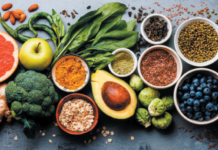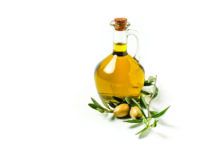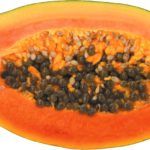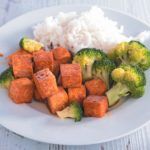Home Search
healthy harvest - search results
If you're not happy with the results, please do another search
Fish: Why (and How) to Choose this Healthful Protein
Dietary guidelines from governments and health organizations around the world agree: a healthy dietary pattern includes around two servings of fish a week. Most American adults get less than the recommended eight ounces per week. What makes fish such an important part of a healthy diet, and what are the best choices for health and the environment?
Foodborne Illness: How to Reduce Risk
Each year, one in six Americans gets sick from eating contaminated food. In the spring of 2018, people across the United States and Canada began falling ill with common food poisoning symptoms: diarrhea, stomach pains, nausea, and vomiting. In the following months, nearly 200 people became ill, and five people died. CDC investigators traced the infection to Romaine lettuce grown in one particular region of the US. Any type of food, even healthy greens, can harbor pathogens. Fortunately, following some simple food safety tips, and paying attention to warnings and recalls, can prevent the majority of foodborne illnesses.
Enrich Your Healthy Plate With Tropical Fruits
In addition to the bananas, apples, grapes, oranges and peaches that often fill the collective American fruit bowl, there is a rich variety of tropical fruits available-some year round, and at affordable prices.
Soy: Still Good for the Heart?
Since 1999, the Food and Drug Administration (FDA) has allowed manufacturers of soy-based food products to claim that consumption of 25 grams of soy protein a day, as a part of a diet low in saturated fat and cholesterol, may reduce the risk of heart disease. This package labeling language was authorized based on preliminary evidence that incorporating soy in your daily meals can lower bad LDL cholesterol levels enough to reduce the risk of heart disease.
Q. I’ve been reading in your newsletter about the downsides of consuming too many...
Q. I've been reading in your newsletter about the downsides of consuming too many starchy foods. Since corn is a starchy food, does that apply to popcorn, which I've been eating thinking it's a healthy snack?
Think Before You Throw Out Healthy Food
Have you ever looked at a "sell by" or "best if used by" date on a food container, checked the calendar, and thrown out something because it had "expired"? Youre part of a $165 billion a year problem. About 40% of Americas food gets wasted, much of it because of a confusing patchwork of state laws that make people think food thats still safe to eat should be trashed.
Smart Supermarket Seafood Shopping
When it comes to planning your meals, it's hard to beat seafood as a nutritional powerhouse. Seafood is rich in protein and other important nutrients. Prepared right - without frying, breading, tubs of butter or caloric sauces - it delivers these nutritional benefits without a lot of calories. Many varieties also contain heart-healthy omega-3 fatty acids.
Expert Tips for Nutrition-Smart Holiday Travel
If you're planning to join the holiday travel crush - or already looking ahead to 2016 vacations - there's good news about your eating options en route. "I actually think that airport choices are beginning to improve a bit, both in terms of take-out and sit-down options," says Jeanne Goldberg, PhD, professor at Tufts' Friedman School and director of the Nutrition Communication Program. "The onus is to choose among the better options."
Take Charge!
Onions are the third most commonly consumed fresh vegetables in the US, after potatoes and tomatoes. (Fourth if you combine head and leaf lettuces.) Per capita onion consumption has risen more than 70% in the last two decades, from 12.2 pounds in 1982 to 20 pounds in 2010.
Beyond Pumpkin: Harvest the Health Benefits of Winter Squash
This seasons culinary and cultural spotlight shines on the pumpkin, but the jack-o-lanterns less-celebrated cousins-winter squash-are also at their peak of flavor and nutrition. Like the pumpkin, butternut, acorn and other winter squash are technically fruits, but are consumed more like vegetables. Though they vary by species, winter squash are at least as nutritious as pumpkin and deliver more nutrients than summer varieties like zucchini. Its no wonder the pre-Colombian Native Americans who first cultivated winter squash buried them with their dead to provide nourishment for the journey to the afterlife.






























